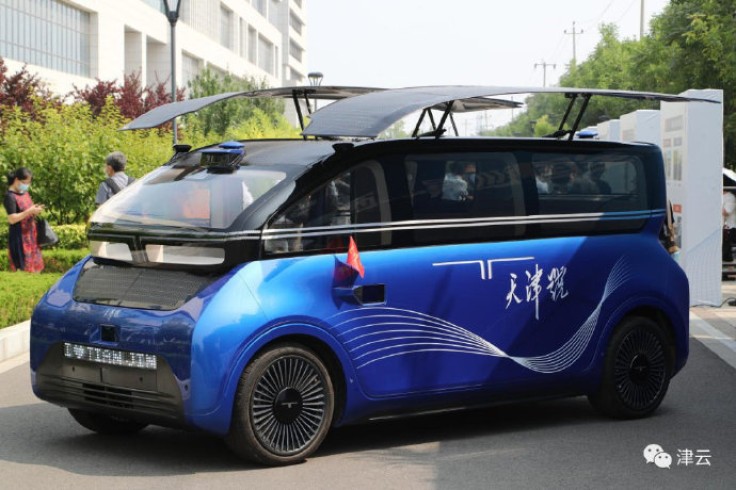
China unveils its first solar electric vehicle to the public.
During a public event gathering, at the World Intelligence Conference, the country showed off its SEV that it is also currently on tour in mainland China.
As reported, the development of this solar vehicle is stated to be a result of collaborative efforts of 42 companies and three universities.
Due to the current alarming environmental state that the world is in, numerous efforts of developing sustainable alternatives have been increasing.
In line with that, there has also been an increase with consumer consumption opting to prefer electric vehicles than the gas fueled cars due to environmental and cost factors.
Furthermore, a team from China has taken environmentally friendly transportation one step further by developing a solar vehicle that operates solely on the energy that is derived from the sun.
This comes at a time when several companies from around the world are moving closer to delivering scaled production of solar electric vehicles. The country's first ever vehicle is named, Tianjin.
#ExploringTianjin #HelloTianjin #ModernTianjin The pure solar car "Tianjin" can move according to the route set by the unmanned system. It will go out of Tianjin and spread the high-end materials and cutting-edge technologies throughout the country. #Tianjin #NiceTianjin pic.twitter.com/6yL1IiBOm8
— Exploring Tianjin (@ExploringTJ) July 9, 2022
China's First Solar Vehicle, Tianjin
China's Tianjin was introduced to have 47 advanced technological features. Some of these features are also the same features that can be experienced and seen in top-tier cars in the industry.
According to Electrek, the Tianjin solar car is reported to be capable of autonomous driving at Level 4 and above.
Tianjin car weight is 1 020 kilograms, it measures 4,080 millimeters in length, 1,770 millimeters width, and is 1,811 millimeters tall (13.4 x 5.8 x 5.9 ft.).
On days with the most sunshine, the daily maximum power generation is 7.6 kWh.
This motor vehicle has a battery pack that has an energy density of 330 watt-hours per kilogram.
The car's features also include four seating capacities just like a regular car you would see in the market. Its max tested range is at 47 miles, while the top speed of the solar vehicle is at 79.2 kilometers per hour.
It is possible to cut carbon emissions by 25 kg for every 100 km traveled (55 lbs. per 62 miles)
Not thrilling specs compared to a solar EV, or any EV for that matter, but still quite impressive considering these numbers come entirely from the sun's energy. That's exciting, to say the least.
The Tianjin, at the very minimum, provides proof of concept for vehicles that can be powered entirely from a natural and abundant source of clean energy.
It's exciting to think about what sort of possibilities this solar vehicle creates for future engineers developing means for us all to get around without emissions.
China's Possible Problems with Tianjin
China's solar electric vehicle also has one very noticeable difference, it is missing a steering wheel. This may or may not be reasonable since the Tianjin is designed to utilize autonomous driving which will eliminate the need for a wheel.
Interesting Engineering has reported that this has been replaced with a large touchscreen display and three buttons in the usual driver's area.
Having the vehicle operate at its speed in urban areas would seem reasonable. However, a massive adaptation of this vehicle might encounter some hurdles with its autonomous driving feature.
The level of automation known as level 4 is notoriously difficult to achieve, which is why companies like Tesla and Waymo have spent years perfecting their systems.
The existing regulations for driver assistance systems require that vehicles only be operated in limited areas (geo-fencing), and they are primarily aimed at ride-sharing. This probably explains why there is no navigator's seat in these vehicles, as it was designed for a human to sit in.









